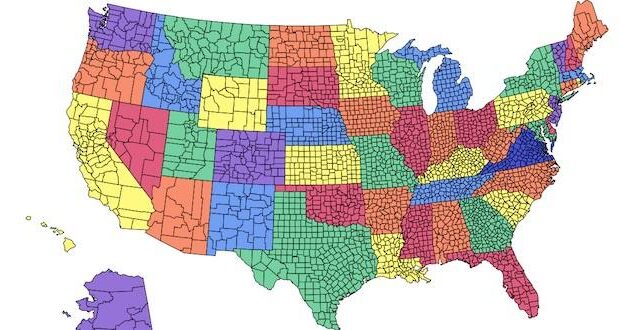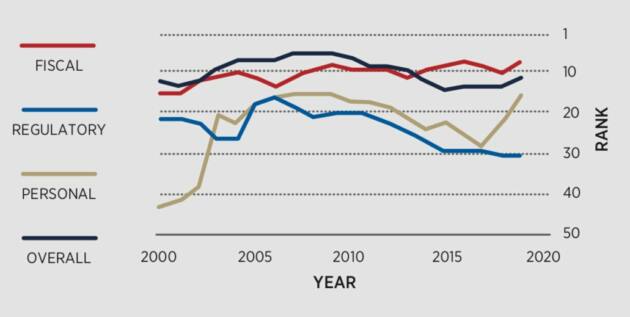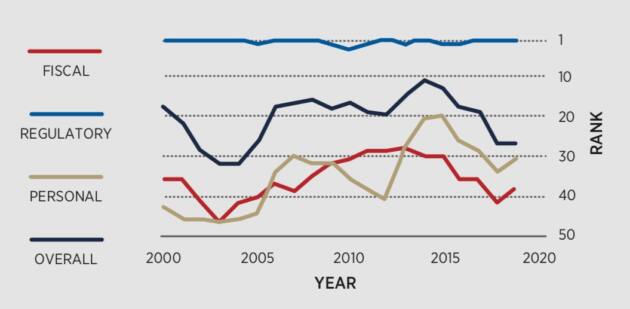Missouri is the 11th-freest state in the nation, while Kansas ranks 27th, according to the new Cato Institute Freedom in the 50 States report. The Cato Institute is a libertarian think tank in Washington, D.C.
“Missouri is one of the country’s freer states, but in recent years it has run the risk of falling back into the middle of the pack,” the report said. “Its slide in regulatory policy is most worrisome, especially because it is not merely relative but is absolute as well, including and excluding federalized policies.
“Missouri’s local taxes are a bit above average (4.1 percent of adjusted personal income), but state taxes are well below average (4.4 percent of income), making for high fiscal decentralization. In addition, Missourians have some choice in local government, with more than one effective competing jurisdiction per 100 square miles. We show that state taxes have fallen since FY 2007 and overall taxes are less than average. Government consumption plus investment and employment is also below average, whereas debt and cash and security assets are about average.”
Kansas, meanwhile, dropped 16 places in the freest states index between 2014 and 2019.
“Kansas made national news with its fiscal policy in 2013/14,” the report said. “The state’s tax cuts were large and reduced the state tax burden from 5.5 percent of income to 5.1 percent, but the next year’s tax hikes bumped that figure back up to 5.4 percent, just under the national average.
“Then, further tax increases in FY 2019 and FY 2020 boosted the tax burden to 6.2 percent of income, higher than the national average. Kansas’s local tax burden (4.0 percent of income) is right at the national average. Thus, Kansas is today a high-tax state. Government employment is much higher than average (14.7 percent of private employment). Government consumption and investment is about average, at 10.7 percent of income, and hasn’t changed much in a decade. Government debt peaked at 27 percent of income in FY 2010 and is now down around 18.0 percent, just under the national average.”
Freedom in the 50 States ranks the American states according to how their public policies affect individual freedoms in the economic, social, and personal spheres. Updating, expanding, and improving upon the five previous editions of Freedom in the 50 States, the 2021 edition examines state and local government intervention across a wide range of policy categories–from tax burdens to court systems, from eminent domain laws to occupational licensing and homeschooling regulation.
The authors have also included a new section that analyzes how state COVID-19 responses have affected freedom since the pandemic began.
New Hampshire remains the most-free state and Hawaii the least free.
Interestingly, of the top 10 free states, 9 are governed by Republicans. Of the 10 least free states, 7 are led by Democrat governors.
 Metro Voice News Celebrating Faith, Family & Community
Metro Voice News Celebrating Faith, Family & Community











